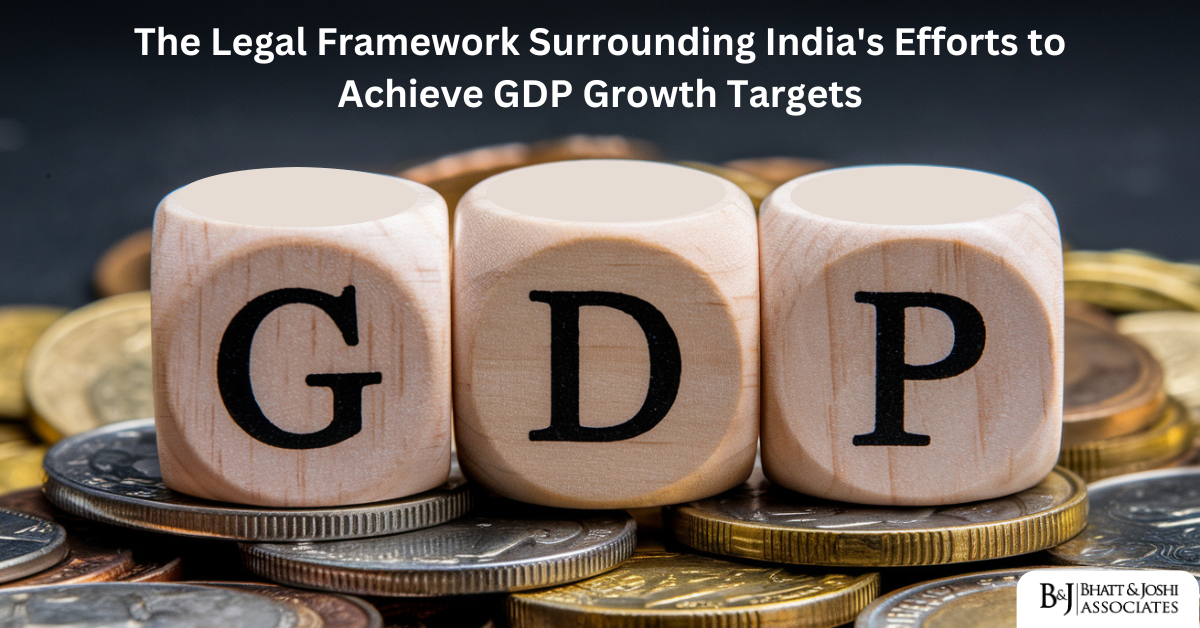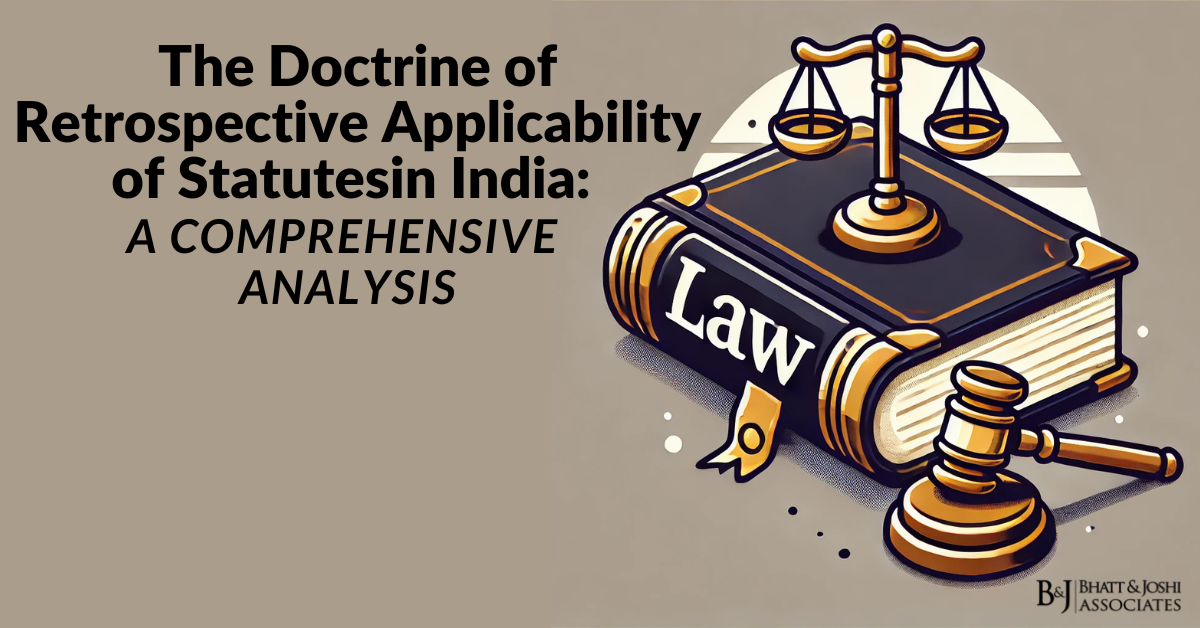Introduction
India’s pursuit of economic growth has been a cornerstone of its policy framework since independence. Achieving ambitious Gross Domestic Product (GDP) growth targets has driven a complex interplay between economic strategies, legislative frameworks, and judicial interpretations. This article delves into the legal framework underpinning India’s economic policies, the role of regulations, landmark judgments, and the challenges in achieving GDP growth targets sustainably.
The Role of GDP Growth in India’s Economic Policies
GDP growth is a critical measure of economic performance and serves as a benchmark for policy formulation in India. Successive governments have aimed to position India as a leading global economy, necessitating robust legislative and regulatory measures. Economic growth not only fuels infrastructure development but also enables poverty alleviation, employment generation, and technological advancement. To meet these objectives, India’s legal system has been shaped to facilitate investments, streamline industrial operations, and promote innovation.
The government’s emphasis on GDP growth has led to periodic reforms and adjustments to the legal framework to attract foreign direct investment (FDI), improve ease of doing business, and incentivize key sectors such as manufacturing, technology, and infrastructure. Notably, the “Make in India” initiative, Digital India, and Startup India are among the flagship programs supported by targeted legislative measures to ensure that India’s economic policies are aligned with global standards and market demands.
Regulatory Framework Supporting Economic Growth
The Indian legal framework comprises various acts, regulations, and policies aimed at fostering economic growth. Key legislations include the Companies Act, 2013, which governs corporate entities, ensuring transparency and ease of doing business. Similarly, the Insolvency and Bankruptcy Code (IBC), 2016, has revolutionized the resolution of financial distress, encouraging foreign and domestic investments by strengthening creditor confidence.
The Competition Act, 2002, promotes market efficiency by curbing anti-competitive practices, thus creating an environment conducive to fair competition. The Foreign Exchange Management Act (FEMA), 1999, regulates foreign trade and payments, ensuring macroeconomic stability and the smooth inflow of foreign direct investment (FDI). The Securities and Exchange Board of India (SEBI) Act, 1992, empowers SEBI to regulate securities markets, fostering investor confidence and improving capital market efficiency.
Additionally, specific sectoral laws such as the Mines and Minerals (Development and Regulation) Act, 1957, and the Electricity Act, 2003, provide frameworks for resource management and energy development, both pivotal for economic growth. Reforms in labor laws, consolidated under the Code on Wages, 2019, and other labor codes, aim to modernize India’s labor framework, making it more investor-friendly while safeguarding worker rights.
Constitutional Provisions and Economic Policies
The Constitution of India plays a foundational role in shaping the economic landscape. Article 39 of the Directive Principles of State Policy emphasizes equitable distribution of resources, ensuring that economic policies align with the principles of social justice. Furthermore, Article 246 delineates the distribution of legislative powers between the Union and State governments, enabling tailored approaches to economic development.
The Goods and Services Tax (GST) introduced through the 101st Constitutional Amendment Act, 2016, exemplifies collaborative federalism aimed at achieving uniformity in taxation and removing barriers to inter-state trade. The GST regime has been instrumental in simplifying the tax structure, thereby contributing to GDP growth. Similarly, Article 301 guarantees the freedom of trade and commerce throughout the country, which has served as the constitutional backbone for reforms aimed at eliminating trade barriers.
Judicial Interpretations and Their Impact on Economic Growth
India’s judiciary has played a pivotal role in interpreting laws to foster economic development. Landmark judgments have clarified ambiguities, balanced competing interests, and upheld the principles of justice and equity. For instance, in the case of Vodafone International Holdings BV v. Union of India (2012), the Supreme Court’s ruling on tax liability highlighted the importance of predictability and fairness in tax administration, encouraging foreign investment.
The apex court’s intervention in environmental matters has also impacted economic policies. In MC Mehta v. Union of India (1986), the judiciary underscored the need for sustainable development, prompting stricter environmental regulations that indirectly influence GDP growth by balancing ecological concerns with industrial expansion.
Similarly, the Kesavananda Bharati v. State of Kerala (1973) case reinforced the doctrine of the basic structure of the Constitution, ensuring that economic reforms do not compromise fundamental rights and constitutional values. In Maneka Gandhi v. Union of India (1978), the judiciary expanded the interpretation of the right to life and personal liberty, influencing the regulatory oversight on economic activities.
Role of Specialized Economic Courts and Tribunals
To expedite resolution of economic disputes, India has established specialized courts and tribunals. The National Company Law Tribunal (NCLT) and National Company Law Appellate Tribunal (NCLAT) address corporate disputes and insolvency matters, ensuring speedy resolutions critical for investor confidence. Similarly, the Securities Appellate Tribunal (SAT) oversees securities market-related grievances, bolstering transparency and trust in financial markets.
Arbitration and conciliation mechanisms, governed by the Arbitration and Conciliation Act, 1996, provide alternative dispute resolution avenues, reducing litigation timelines and enhancing India’s reputation as a global arbitration hub. Fast-tracking dispute resolution is vital for maintaining investor trust and ensuring uninterrupted economic activities.
Challenges in Achieving GDP Growth Targets
Despite a comprehensive legal framework, India faces challenges in achieving GDP growth targets. Bureaucratic inefficiencies, regulatory overlaps, and delays in judicial processes often deter investments. The implementation of laws, such as the Real Estate (Regulation and Development) Act, 2016 (RERA), faces hurdles due to state-level variations, impacting uniformity and investor confidence.
Corruption and lack of transparency further impede economic growth. Landmark cases like the 2G Spectrum Case (2012) highlighted systemic issues, prompting stricter anti-corruption measures. However, consistent enforcement remains a challenge. Similarly, the lack of clarity in tax laws has often resulted in prolonged litigation, as seen in cases like Cairn Energy v. Union of India (2021), which involved retrospective taxation.
International Trade Laws and Agreements
India’s integration into the global economy requires adherence to international trade laws and agreements. The country’s compliance with World Trade Organization (WTO) norms and bilateral trade agreements facilitates export-led growth. However, disputes such as the Solar Panel Case (2016) at the WTO reveal tensions between domestic policies and international obligations, requiring careful navigation.
To strengthen its position in global trade, India has actively participated in regional trade agreements such as the South Asian Free Trade Area (SAFTA) and is exploring new trade partnerships under frameworks like the Comprehensive Economic Partnership Agreement (CEPA) and the Comprehensive and Progressive Agreement for Trans-Pacific Partnership (CPTPP).
Sector-Specific Legal Interventions
India’s legal framework includes sector-specific interventions to boost growth. In agriculture, the controversial farm laws aimed at liberalizing markets sparked debates about balancing farmer welfare with economic efficiency. In the technology sector, the Information Technology Act, 2000, and subsequent amendments have facilitated the growth of the digital economy while raising concerns about data privacy and cybersecurity.
Infrastructure development, a key driver of GDP growth, is governed by laws such as the Land Acquisition, Rehabilitation, and Resettlement Act, 2013, which seeks to balance developmental needs with equitable compensation and rehabilitation. The Public-Private Partnership (PPP) model, supported by regulatory frameworks, has also been instrumental in driving large-scale infrastructure projects.
Environmental Regulations and Economic Growth
Sustainable development is integral to long-term GDP growth. Environmental regulations such as the Environment Protection Act, 1986, and the Forest Conservation Act, 1980, aim to mitigate the adverse impacts of industrialization. Judicial pronouncements, including those in T. N. Godavarman Thirumulpad v. Union of India (1996), have emphasized forest conservation, influencing infrastructure projects and resource allocation.
India’s commitment to international environmental goals, such as the Paris Agreement, has also shaped its domestic policies. Renewable energy initiatives under laws like the Electricity Act, 2003, aim to reduce carbon footprints while contributing to energy security.
Future Recommendations for Achieving GDP Growth
To achieve sustained GDP growth, India must address systemic challenges in its legal and regulatory frameworks. Simplifying bureaucratic processes, enhancing transparency, and strengthening enforcement mechanisms are critical. Further, fostering cooperative federalism through better coordination between the Union and State governments can address regional disparities and promote holistic growth.
The judicial system must continue to prioritize economic matters, ensuring timely resolution of disputes. Leveraging technology, such as artificial intelligence in legal analytics and case management, can improve efficiency. Expanding the scope of arbitration and introducing mandatory pre-litigation mediation for commercial disputes can reduce litigation backlogs.
Conclusion: Achieving GDP Growth within Legal Boundaries
India’s legal framework plays a crucial role in achieving GDP growth targets by creating an enabling environment for investment, innovation, and industrialization. However, the effectiveness of these laws depends on their implementation, transparency, and alignment with sustainable development goals.
Judicial interventions, while upholding constitutional principles, often compel recalibration of policies, ensuring a balance between economic ambitions and social justice. Moving forward, addressing systemic inefficiencies, fostering cooperative federalism, and embracing technological advancements will be pivotal in leveraging the legal framework to achieve inclusive and sustained GDP growth.
India’s journey toward economic prosperity is a testament to its dynamic legal system, which continues to evolve in response to emerging challenges and opportunities. By harmonizing economic policies with constitutional values and global commitments, India can realize its vision of becoming a $5 trillion economy and beyond.














